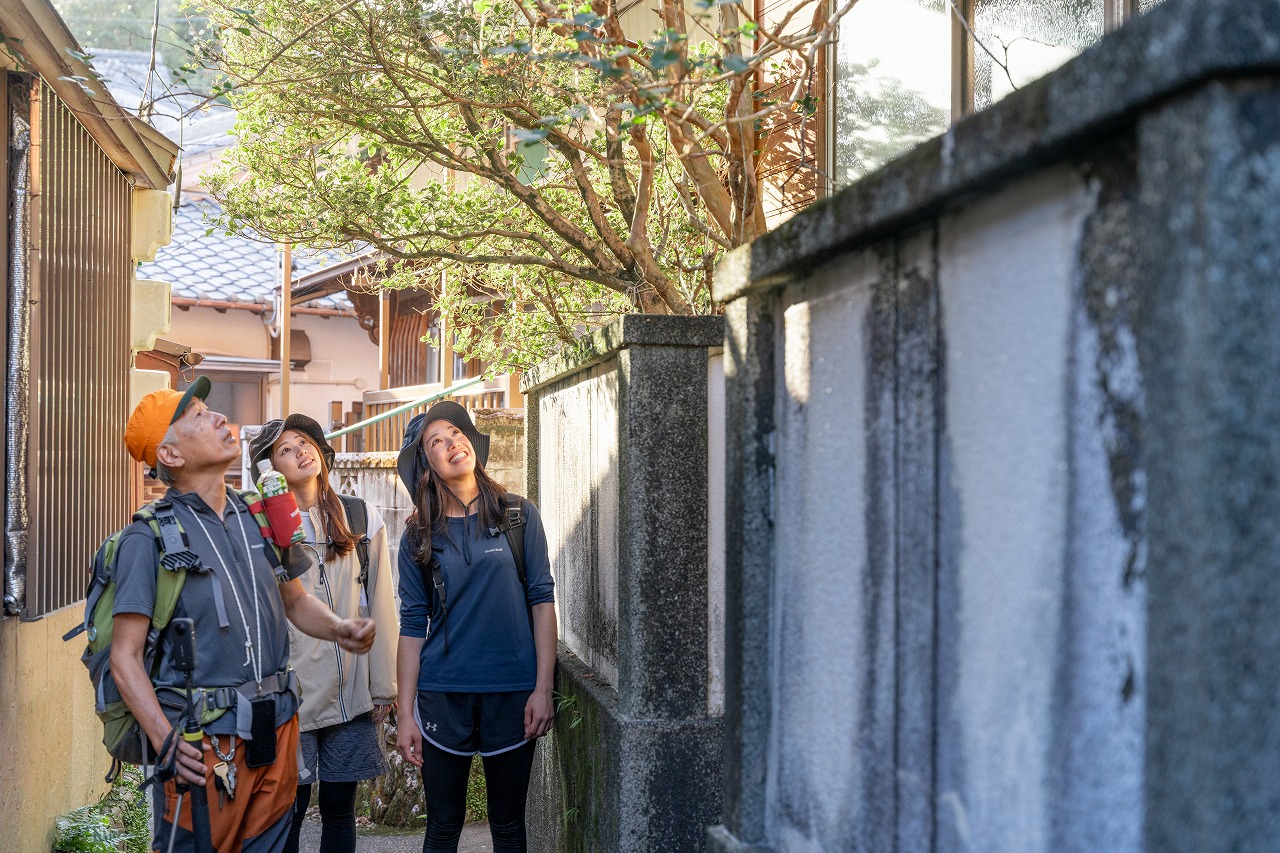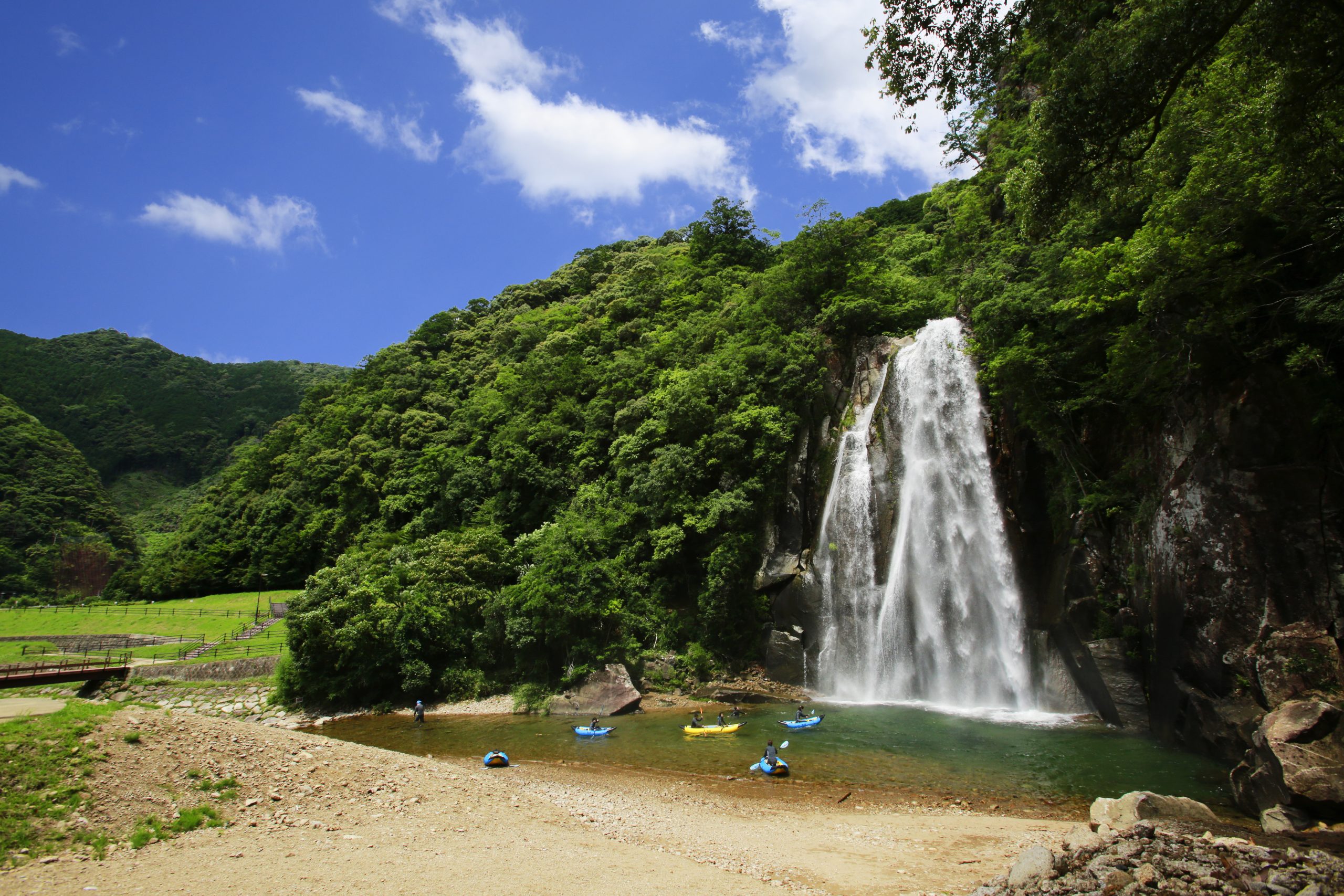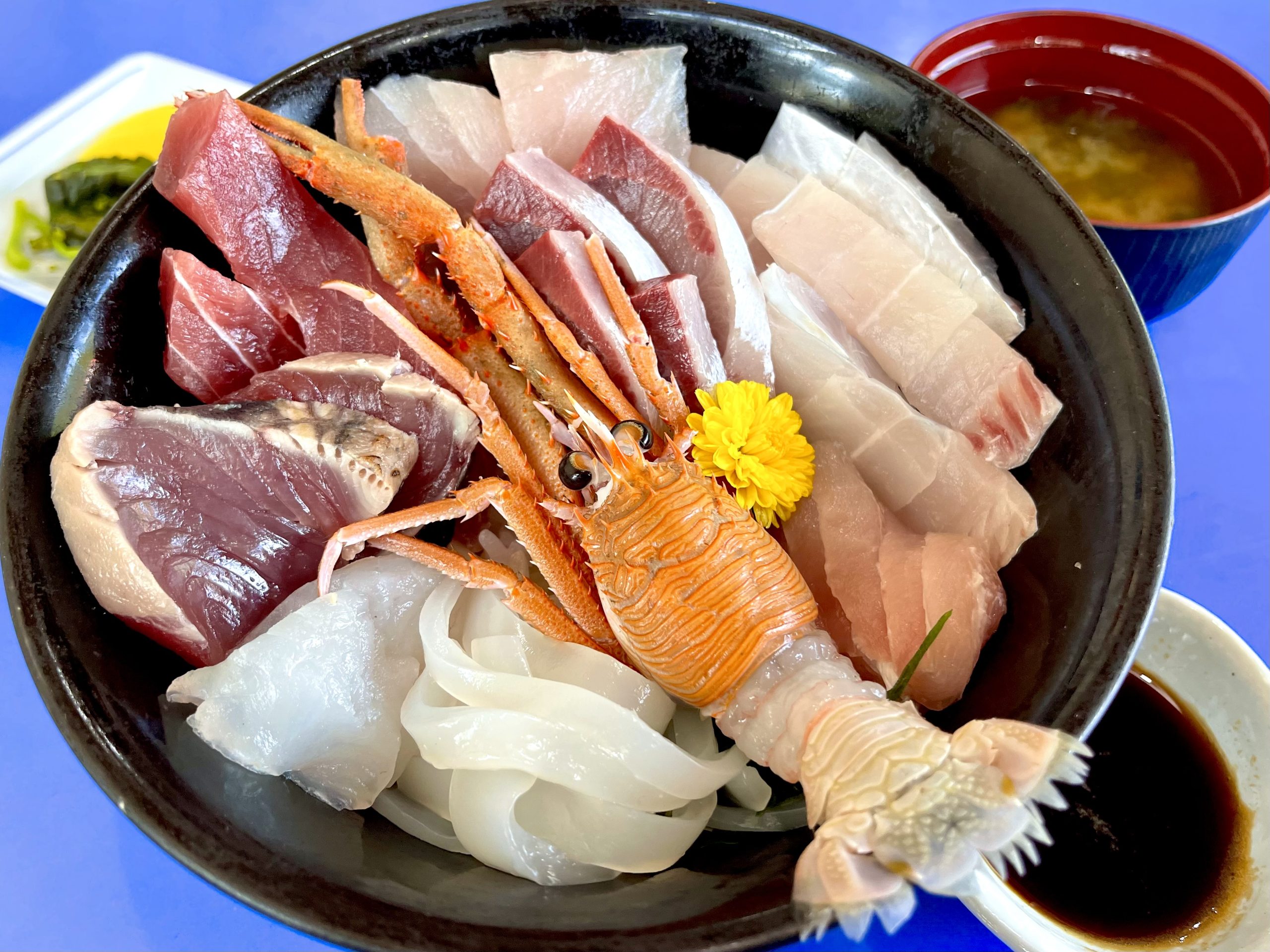Gourmet Series – Sushi
Update:
Kihoku Town
Owase City
Kumano City
Mihama Town
Kiho Town
The region of Higashikishu is blessed with abundant seafood and mountain produce, making it a treasure trove of local sushi.
Traditional local sushi dishes have been popular in the area for a long time, such as Sanma Sushi and Aji no sugatazushi, which use a whole fish; Mehari-zushi which is wrapped in salted takana; and the colorful Oshi Sushi pressed in a wooden frame.
In addition, there are unique sushi dishes not found in other regions, such as Kaki Sushi made with savory Watari Kaki (Oyster) boiled in sweet broth, Kobu-zushi wrapped in Shirota-konbu, and Kashimai-zushi made with cutlass fish. The culture of Nare-zushi, fermented with lactic acid instead of vinegar to produce acidity, is also deeply rooted in the region.
We will introduce beloved sushi dishes that have deeply rooted in the lives of the locals.
▼INDEX
1 Sanma (Saury) Sushi [Whole region]
2 Mehari-zushi (A Traditional Rice Dish) [Whole region]
3 Oshi Sushi [Kihoku-cho, Owase City]
4 Kaki Sushi [Kihoku-cho]
5 Kobu-zushi [Kumano, Mihama, Kiho]
6 Kashimai-zushi[Mihama-cho]
7 Aji no Sugatazushi (Horse Mackerel Sushi) [Whole region]
8 Sanma Nare-zushi (fermented sushi) [Kumano City]
1 Sanma (Saury) Sushi [Whole region]
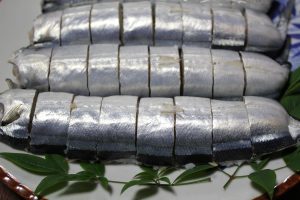
Samma (Saury) Sushi is a local sushi dish commonly seen in Higashikishu, which was traditionally eaten as a special feast during celebratory occasions when relatives gather, such as on New Year’s Day.
While the opportunity to make it at home has decreased recently, it can still be purchased at supermarkets and Michi-no-Eki (roadside stations).
However, there are subtle variations in the dish depending on the region, such as whether the fish is opened from the back or the belly, whether it includes the tail and head, and whether the condiments are mustard or citrus-based.
In the area north of Owase City, Sanma Sushi is made by opening the fish from the belly and pressing it into a sushi mold.
In the southern regions around Kumano City, it is rolled into sushi with the fish opened from the back, and sometimes with the tail and head still attached, although this version has become increasingly rare.
The condiments used differ depending on the region, with ground mustard used in the north and a citrus vinegar made from oranges or yuzu used in the south, giving it a refreshing acidic flavor.
According to one theory, the reason for the difference in preparation style is related to the Okukumano Daikansho (magistrate’s office) that was located in Kumano City during the Edo period, as the samurai wanted to avoid any association with acts of seppuku or harakiri, which involved cutting open the belly or decapitation.
There is a belief that the origin of Sanma Sushi, which is enjoyed throughout Japan, is in Higashikishu. The Ubuta-jinja in Owase City is considered the birthplace of Sanma Sushi.
Legend has it that Kagutsuchi-no-Mikoto, the god of fire, was born there to Izanami-no-Mikoto, and Kagutsuchi, who was weak, gained strength by consuming Sanma with bones.
A stone monument has been erected in front of the torii gate of the shrine, marking it as the “birthplace of Sanma Sushi”.
On January 10th each year, during the Hohan no Gi festival, bone-in Sanma Sushi is served with the wish of children growing up healthy.
2 Mehari-zushi (A Traditional Rice Dish) [Whole region]

Mehari-zushi (A Traditional Rice Dish) was originally created to be a convenient snack for people to eat while on the go or during breaks in their busy workday.
Its name is said to come from the notion of being “surprised by the large mouthful” and “amazed by its deliciousness”.
Typically, this type of sushi involves mixing chopped salted Tanaka (mustard greens) into the rice and wrapping it in a large piece of Tanaka.
While chopped Tanaka is the most common filling, some people use umeboshi (pickled plums), bonito flakes, salmon, or other ingredients.
In certain regions, simple Tanaka onigiri is a staple food and also considered a type of soul food.
3 Oshi Sushi [Kihoku-cho, Owase City]
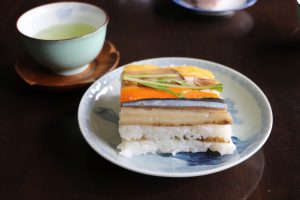
The dish known as Oshi Sushi is a popular culinary delight in the Owase City area and Kihoku-cho.
It is made by arranging a variety of ingredients, such as vinegar-pickled saury and horse mackerel, alongside carrots, shiitake mushrooms, burdock root, and eggs, in an appealing and colorful manner.
The dish is created by layering vinegar rice and Hanamyoga leaves, which have anti-corrosion properties, within a wooden frame and pressing them firmly together.
It is often served in stacked layers as the centerpiece of celebratory occasions such as engagements, weddings, naming ceremonies, and housewarming parties, to symbolizethe accumulation of good fortune.
Sometimes referred to as Kokerazushi, the dish’s name is said to have come from its association with the kokerabuki roofing style, where ingredients are arranged one by one, much like the layered structure of the roof. Additionally, it is believed to have been served during the first performances of theaters and other similar events, known as kokeraotoshi. This colorful and delicious treat is a great way to whet the appetite, and is perfect for special occasions.
4 Kaki (Oyster) Sushi [Kihokucho]

Oysters are bred in Shiraishi Lake located in Kihoku-cho due to the nutrient-rich blend of seawater from Kumano-nada and freshwater from the mountains. These oysters, which are primarily consumed locally, are considered a rare delicacy since they are cultivated in small fishing areas.
Despite their diminutive size, they are distinguished by a subtle and delicate flavor.
This prized ingredient is utilized to create Kaki (Oyster) Sushi, in which oysters are seasoned with mirin, sugar, and soy sauce, then served atop sushi rice alongside a dab of mustard. This dish promises a refined flavor that is sure to satiate your taste buds.
5 Kobu-zushi [Kumano, Mihama, Kiho]
The kelp-wrapped rolled sushi passed down from Kumano City to Minamimuro-gun is an essential dish for New Year’s and important occasions like weddings and funerals.
The golden layer that wraps the sushi rice is made from kelp and is considered auspicious because it sounds like yorokobu (to be delighted). This delicacy uses shiraita konbu, which is made by shaving the surface of high-quality kelp.
The konbu is then slightly cooked and filled with ingredients like carrots, shiitake mushrooms, and burdock root at the core before being served like a seaweed roll.
Although the kelp is from Hokkaido, there are various theories as to why this sushi has been passed down to Kumano, where kelp cannot be harvested.
Some suggested that this type of kelp was found among the cargo of a trading ship that attacked during the height of the Kumano navy’s power, while others believe it is a product of the Kuroshio (Black or Japan Current) culture handed down by fishermen, as a similar type of Kobo-zushi can also be found in Tosa.
6 Kashimai-zushi [Mihama-cho]
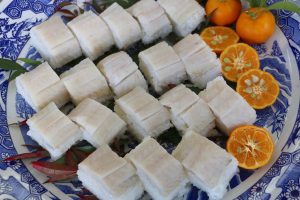
In certain regions of Higashi-kishu, kashimai is used to describe something that is upside down. Kashimai-zushi is a type of sushi made with cutlass fish, where the fish is sliced into three pieces, skinned, and pressed with the skin side down.
The name comes from the fact that the fish is upside down.
The sushi has a refined and elegant appearance, with a delicate flavor. It has a light yet firm texture, and when combined with the sweetness and acidity of the vinegar, it creates a delicate taste. Its mild and enjoyable flavor is popular with everyone, and it is often served at celebratory events such as tatemae (ritual to bless a newly built house) and weddings.
7 Aji no Sugatazushi (Horse Mackerel Sushi) [Whole region]
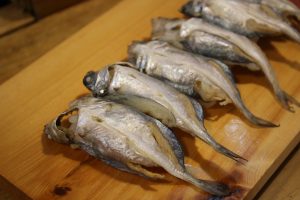
Aji no Sugatazushi is a type of sushi made using baby horse mackerel, which is said to be in season during the summer.
The entire fish is used to make the sushi, and it is tender enough to be eaten from head to tail.
To prepare, fresh baby horse mackerel is first cleaned by removing the dorsal and ventral fins.
The fish is then opened up with the head still attached and marinated in vinegar.
In Kumano, vinegar with citrus fruit is commonly used to give the dish a refreshing and non-fishy flavor.
8 Sanma Nare-zushi (fermented sushi) [Kumano City]
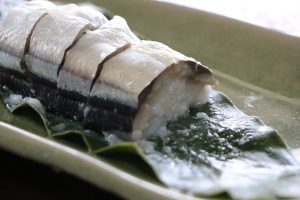
In the regions along the Kumano-gawa River, many sweetfish were caught and used to make Nare-zushi (fermented sushi) since ancient times until the 1950s when a dam was constructed and sweetfish became scarce.
Nowadays, saury is used instead of sweetfish to make Nare-zushi.
After removing the fat from the saury caught in the Kumano-nada, it is opened, salted for about 20 days, and then desalted.
Next, it is placed on top of rice that has been tightly squeezed together.
The rice and saury are then stacked in a bucket, covered with a drop lid, weighted down, and left to ferment in a thin saltwater solution for about 2 to 3 weeks. The taste of Nare-zushi is greatly influenced by factors such as the degree of salting of the saury, the cooking of the rice, and the temperature during storage, making it difficult to produce the same taste consistently.
Nare-zushi has a unique smell that may deter some people, but those who enjoy it find the taste irresistible.


